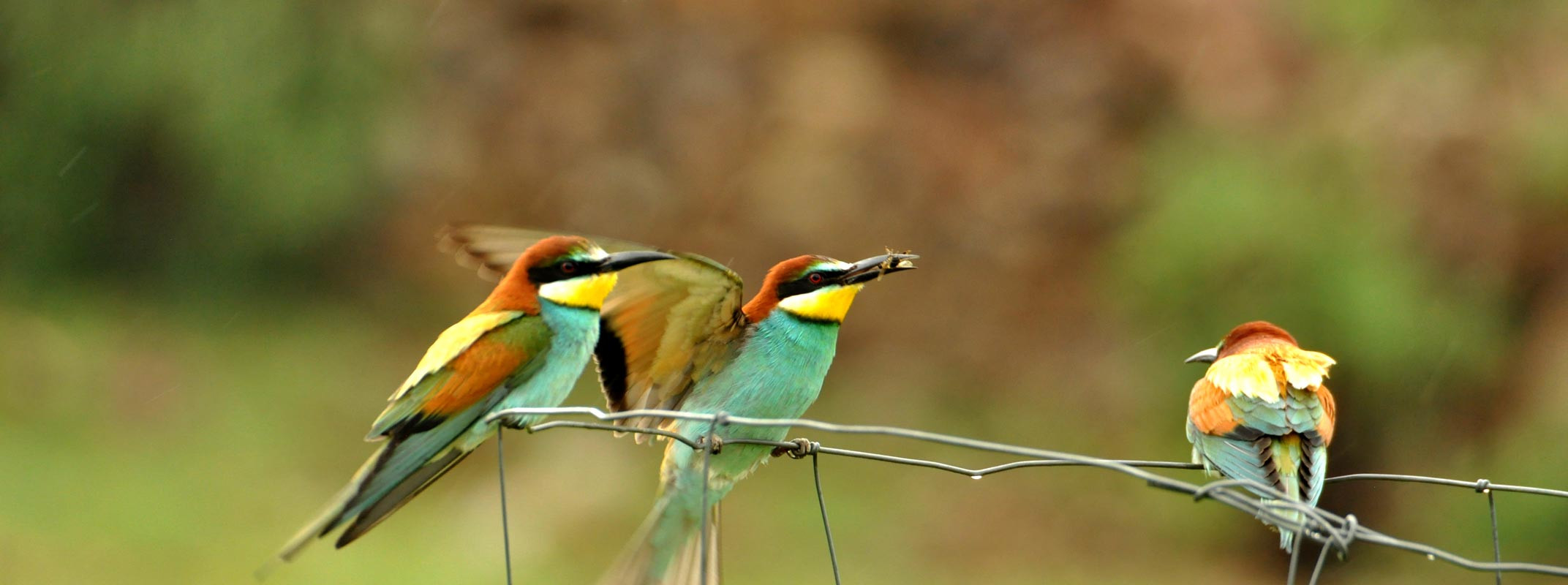

La trashumancia de ganado ovino – aparte de ser una actividad milenaria de gestión racional de espacios naturales – posee en su interior el secreto de la biodiversidad. Las dehesas andaluzas y extremeñas descansan, no son ni pisoteadas ni consumidas hasta a última hierba y consiguen recuperarse. Los puertos en el norte (provincias de León y Palencia) mantienen sus espacios abiertos escapando de la matorralización y del fuego. Esta actividad ha desaparecido, prácticamente, y Fundación Monte Mediterráneo se ha propuesto recuperarla.
El 20 de junio por la tarde, las ovejas con cuatro perros mastines emprendieron su viaje de Santa Olalla a Vidrieros (Palencia).
Por la mañana bajan del camión en Vidrieros para subir andando al puerto Piedrahita, donde encuentran pasto verde, fresquito...
Die “Transhumanz” von Schafen – abgesehen davon, dass Schafhalter Jahrtausende lang so die Naturräume genutzt haben – verbirgt in ihrem Wesen das Geheimnis der Biodiversität. Die Dehesas in Andalusien und Extremadura werden nicht überweidet, der Boden nicht verdichtet und kann sich erholen. Die Bergweiden im Norden (Provinzen León und Palencia) werden natürlich entbuscht, Weidegebiete werden offen gehalten: der beste Brandschutz! Diese Bewirtschaftungsform ist so gut wie verschwunden und Fundación Monte Mediterráneo möchte sie wiederbeleben.
Am 20. Juni abends traten die Schafe ihre Reise von Santa Olalla nach Vidrieros (Palencia) an.
Am Morgen verlassen sie den LKW in Vidrieros, um auf die Bergweiden von Piedrahita zu gehen, wo es frisch ist und sie grünes Gras vorfinden...
Transhumanz ist das Verbringen von Schafherden (Juni bis Oktober) aus den futterarmen, heißen Gebieten im Süden Spaniens in kühlere Berggebiete des Nordens – vgl. z.B., Almauf- und abtrieb der Kühe in der Schweiz
The “transhumance“ of sheep – apart from being a millennial instrument of livestock management in natural habitats – hides in its interior the secret of biodiversity. The dehesas in Andalusia and Extremadura being overgrazed nor the soil is being compacted and they can recover. In the mountain pastures in the North (Provinces of Palencia and León) the sheep clear shrubs, keep the pasture areas clear: the best fire prevention. This management practice has almost disappeared and Fundación Monte Mediterráneo would like to recover it.
On June 20th in the evening, the sheep start their journey from Santa Olalla to Vidrieros (Palencia).
In the morning, they leave the truck in Vidrieros and walk up to the mountain pasture of Piedrahita where they find green grass and it is fresh...
Transhumance: to bring sheep herds (June to October) from Southern areas, which are poor in food and very hot to cooler mountain pasture areas in the North – see, e.g., traditional practice of mountain grazing in Switzerland with cows)

